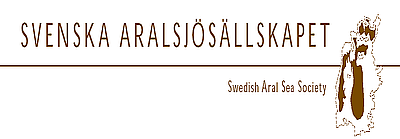1c.
Understanding sustainable development

The meaning of “sustainable development” should be kept simple: sustainability is a state which may continue in the long term, in fact forever. Sustainable development is a development, which brings us closer to sustainability. (Others consider sustainability and sustainable development to be the same thing.)
Sustainability normally refers to a system including not only society and people, but also nature or the environment. The system may be a city or a country, but today most often it is the whole world with everything on it, including nature, people, and our societies. For example, if someone talks about a sustainable economy, one may need to remind the person that the economy is part of a larger system and that it depends on all the component parts. One very often says that sustainable development has three dimensions, ecological (also called environmental), economic and social. However, these three parts of the system may be subdivided. Thus, the environment consists of the life forms, the atmosphere, the soil etc, while the social dimension may be divided into human welfare and society with all its institutions. It is obvious that the huge system under study has very many components.
The long term conditions required for sustainable development were used by the Brundtland Commission to create the most often used “definition” of sustainable development: “Sustainable development is development that meets the needs of the present without compromising the ability of future generations to meet their own needs”. It contains within it two key concepts:
- the concept of 'needs', in particular the essential needs of the world's poor, to which overriding priority should be given; and
- the idea of limitations imposed by the state of technology and social organization on the environment's ability to meet present and future needs.
One may see the Brundtland report as a diplomatic compromise between the concern of the Third World for development and the first world for environmental protection.
Understanding sustainable development is quite often a personal matter; these personal views have to be respected – what is important for one person or another may differ very much. Nevertheless, there are some basic conditions, which need to be fulfilled if a society should continue to prosper in the long term. These conditions may be divided into physical, biological, and social. The physical conditions are summarized in the Natural Step conditions for sustainable development, often used in practical work in business and at the local, the city, level. Here the proper use of resources and non-accumulation of pollutants are in focus. The biological conditions remind us about that we all depend on the sun as a source of energy, and that diversity of life forms need to be conserved to maintain life in the longer term. The social conditions for sustainable development have been less well studied. So far we may say that they refer to proper governance of societies, human welfare and a limited human population. (see also Chapter 11b: Implementing Sustainable Development)
An important condition for sustainability is not to rely on non-renewable resources (such as fossil fuels) or use renewable resources (such as fish) above their regeneration capacity. One may also underline that the human population need to stay within the carrying capacity of the environment. Sustainable development thus in practice often become the proper management of limited resources. (See also Session 3b: Limits to Growth)
The conditions thus reminds us that the interaction between the human realm and nature need to work properly. It includes both the fact that nature provides us with resources – air to breath, water to drink and food to eat – but that it also takes care of all the waste emitted from the human society. The capacity of Nature to do this should not be overused to guarantee long-term survival, that is, sustainability. Sustainability also requires that a society works properly, and that nature in itself also needs to work properly. All of this is illustrated in the list of collapsed and successful societies (See Chapter 1a: Stories of Societies Which Succeeded or Collapsed).
Material for session 1c
Basic level
- Read Environmental Science, chapter 25, pages 772-778: The Prospect of Sustainable Development or The Prospect of Sustainable Development (in Russian).
- Sustainable Development and Political Change. An interview with Gro Harlem Brundtland. (YouTube video).
Medium level (widening)
- Read Environmental Science, chapter 2, pages 64-65: How the Environment Works – Turnover of Matter and Energy.
- Read relevant parts of Environmental Science, chapter 3 and especially page 78: Ecology and Ecosystems.
Advanced level (deepening)
Compare the “definitions” of sustainable development used by different institutions.
- Brundtland Commission
- World Business Council for Sustainable Development
- The IUCN, published in their Caring for the Earth, 1990. Caring for the Earth: A Strategy for Sustainable Living
A more elaborate discussion on the concept of sustainable development by Robert W. Kates, Thomas M. Parris, and Anthony A. Leiserowitz, is found in the April 2005 issue of Environment: Science and Policy for Sustainable Development, Volume 47, No 3, pages 8–21.
DOI
References
Kates, R. W., Parris, T. M. and A. L. Leiserowitz. 2005. Environment Science and Policy for Sustainable Development, vol 47:3 pp 8 – 21.
Rydén, L., Migula, P. and M. Andersson (eds.). 2003. Environmental Science – understanding, protecting, and managing the environment in the Baltic Sea region. Baltic University Press, Uppsala, Sweden.
BUP Sustainable Development Course
